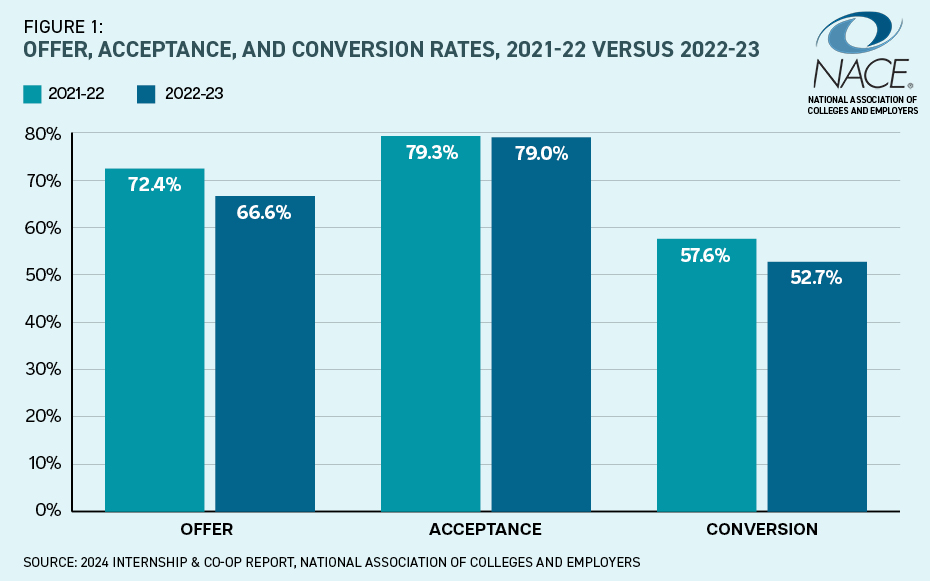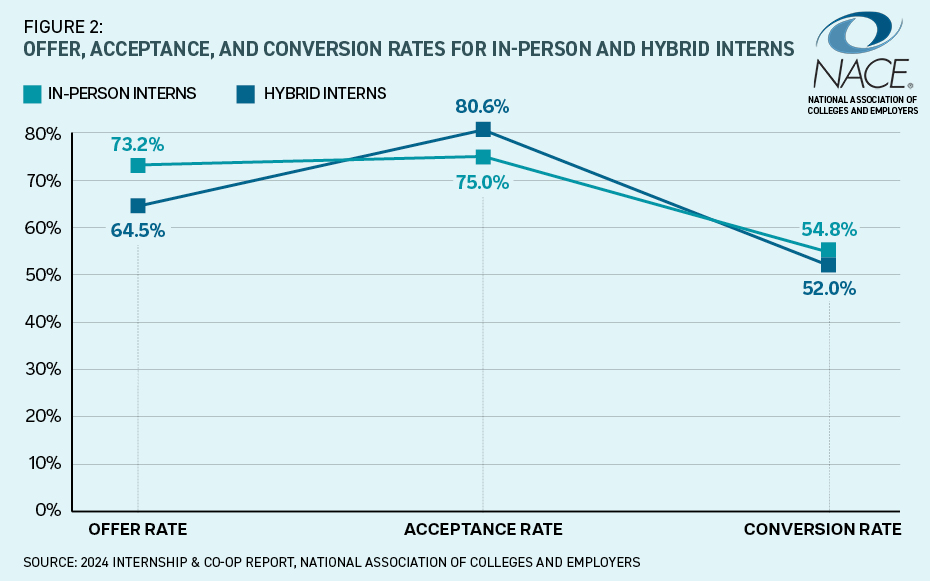Learn More
2024 Internship & Co-op Report and Compensation GuideBest Practices for Internships
Calculating and Using Intern-to-Full-time-Hire Conversion Rate
The drop-off in the rate at which employers extended offers of full-time employment to their interns could reflect lower-than-expected hiring needs—or could signal an issue with the intern selection process.
The overall rate at which interns converted to full-time hires fell last year, but the drop can be attributed to employers’ extending fewer offers, according to NACE’s 2024 Internship & Co-op Report.
Employers reported converting approximately 53% of their 2022-23 interns to full-time hires, down from nearly 58% the previous year. However, they also reported extending full-time job offers to just two-thirds of their 2022-23 interns, down from more than 70% in 2021-22. At the same time, the acceptance rate held steady. (See Figure 1.)

The drop-off in the offer rate—which is the lowest reported offer rate in five years—could reflect lower-than-anticipated hiring needs, just as employers’ projections for full-time hiring for 2023 graduates fell from nearly 15% in fall 2022 to about 4% in spring 2023. The lower rate could also indicate problems in selecting students for internships. In fact, employers who gave themselves high marks for converting interns to entry-level hires had a significantly higher offer rate—72%.
In addition, data are limited but show that employers with in-person interns extended job offers at a higher rate and had a higher average conversion rate than those with hybrid interns, even though hybrid interns were more likely to accept offers than their in-person peers. This may suggest that, although hybrid interns were generally more satisfied, in-person interns have more opportunity to demonstrate their value. (See Figure 2.)

The survey on which NACE’s 2024 Internship & Co-op Report is based was conducted October 31, 2023, to January 5, 2024; a total of 283 organizations took part. Of these, 230 were NACE member organizations, representing 25.5% of eligible member respondents. The report explores key aspects of employers’ internships and co-op programs, including hiring projections for the current year as well as historical data for benchmarking and trends analysis.





